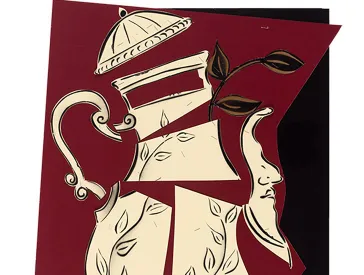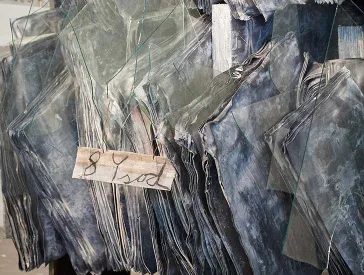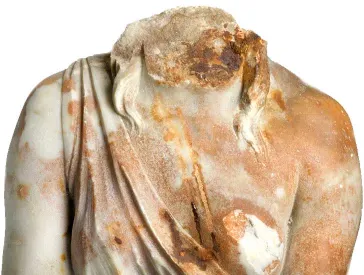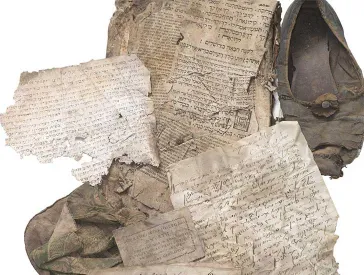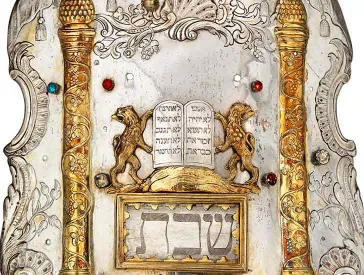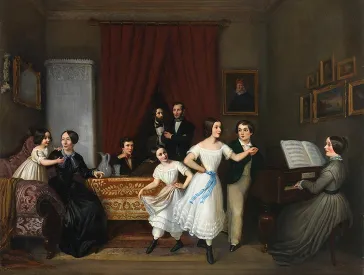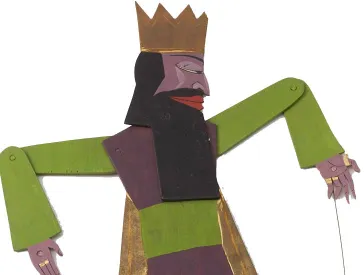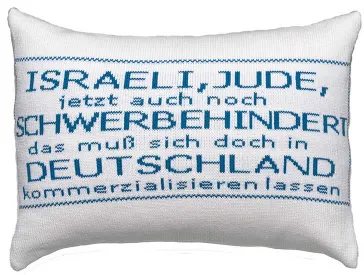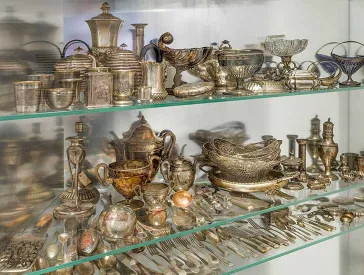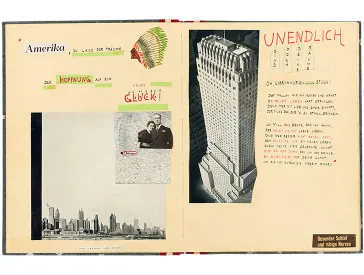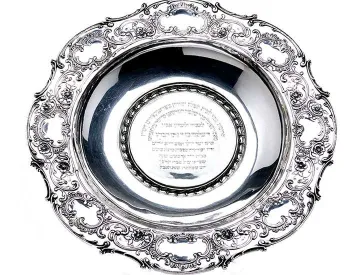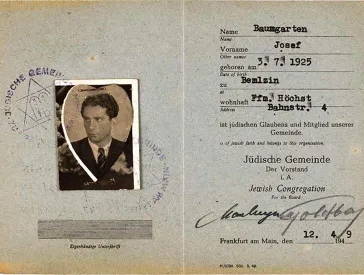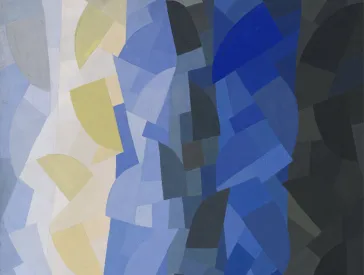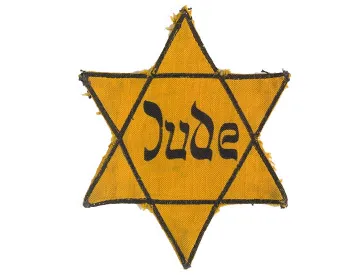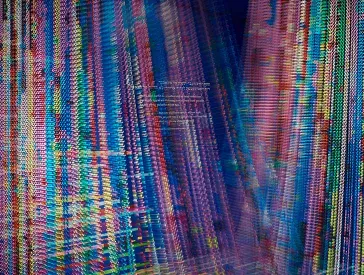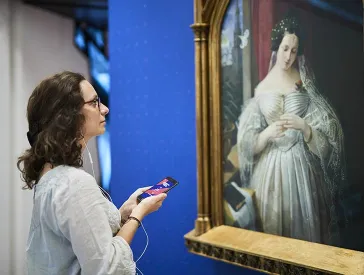Decorated Cushion
Unusual Objects From Our Permanent Exhibition Tell Stories of Jewish Life
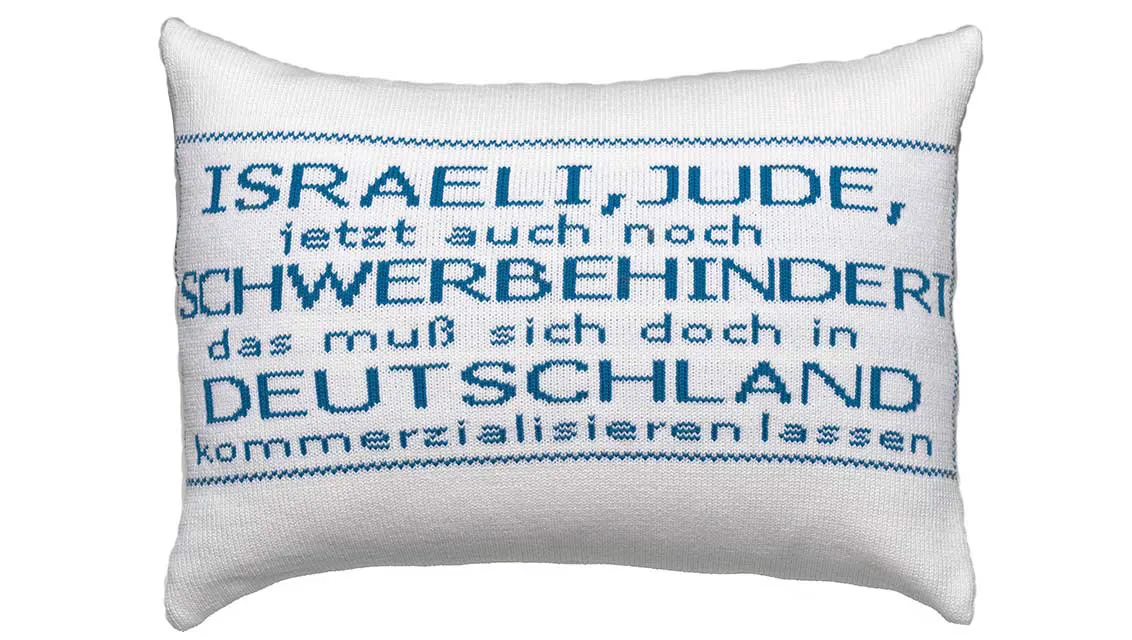
“ISRAELI, JEW, and now SEVERELY DISABLED—there’s got to be a way to capitalize on that in GERMANY,” Daniel Josefsohn (1961–2016), Berlin, 2014/15, textile; Jewish Museum Berlin, accession NDA/1510/0, photo: Roman März
A focus of Daniel Josefsohn’s work is his engagement with Germany and Israel. He was born to Israeli parents in Hamburg and in 2012 suffered a stroke that left him paralyzed on one side. Knit in the Israeli colors, this cushion looks like a souvenir and recalls the traditional embroidery designs found in many German living rooms.
Exhibition Curator Theresia Ziehe Answers Questions About This Object:
How did the pillow come to you at the museum?
Shortly before his death on 13 August 2016, I got in contact with Daniel Josefsohn and we met a few times in his atelier. During these intensive encounters, I noticed a pillow. We quickly agreed that, along with several photographs, an acquisition for the Jewish Museum Berlin would include the pillow.
The prototype of this pillow looked somewhat different, but Daniel Josefsohn himself determined its final form.
Was there a specific reason why Josefsohn designed the pillow?
The pillow was created in connection with the photo series Im gelobten Land (In the Promised Land). His trip to Jerusalem was the first photographic work that Daniel Josefsohn undertook abroad after his heart attack in 2012. In 2016, the nine-part photo series was published in Zeit magazine, along with a text about his travel experiences.
The prototype of the pillow in Daniel Josefsohn's atelier; Jewish Museum Berlin, photo: Jens Ziehe
Why did he embroider a pillow?
Daniel Josefsohn's main mode of expression was photography, but in addition he also developed installations and objects. The pillow almost certainly interested him for the contrast between its provocative writing and conventional appearance For his photographs, he also often selects trenchant or excessive titles.
Where is it displayed?
In the room in the core exhibition dedicated to After 1945, there is a segment focused on "Israel, Germany, and the Jews." The pillow illustrates an anchor of Daniel Josefsohn's work: grappling with Germany and Israel as a Jew. He lived and worked in Germany, but was buried in Israel.
What moves you most about the pillow?
The combination of provocation, serious interrogation, and humor. Daniel Josefsohn awakens our curiosity and focuses our attention on relevant themes.
Daniel Josefsohn: Self-portrait with Mink Scarf, 2012; Jewish Museum Berlin, accession 2017/357/0
Is there more of Josefsohn's work in the Jewish Museum Berlin?
Along with the pillow, several photographs also entered our collection: the nine-part series Im gelobten Land, a self-portrait with mink scarf, a photograph with the title Berlin Mitte Super Jewboys, and one more, in which he raised an Israeli flag in front of Hermann Goring's former villa on the island of Sylt, entitled: More Jewish Settlement on Sylt Strip.
Daniel Josefsohn: More Jewish Settlement on Sylt Strip, 2007, Jewish Museum Berlin, accession 2017/355/0
Core Exhibition: 13 Objects – 13 Stories (13)
